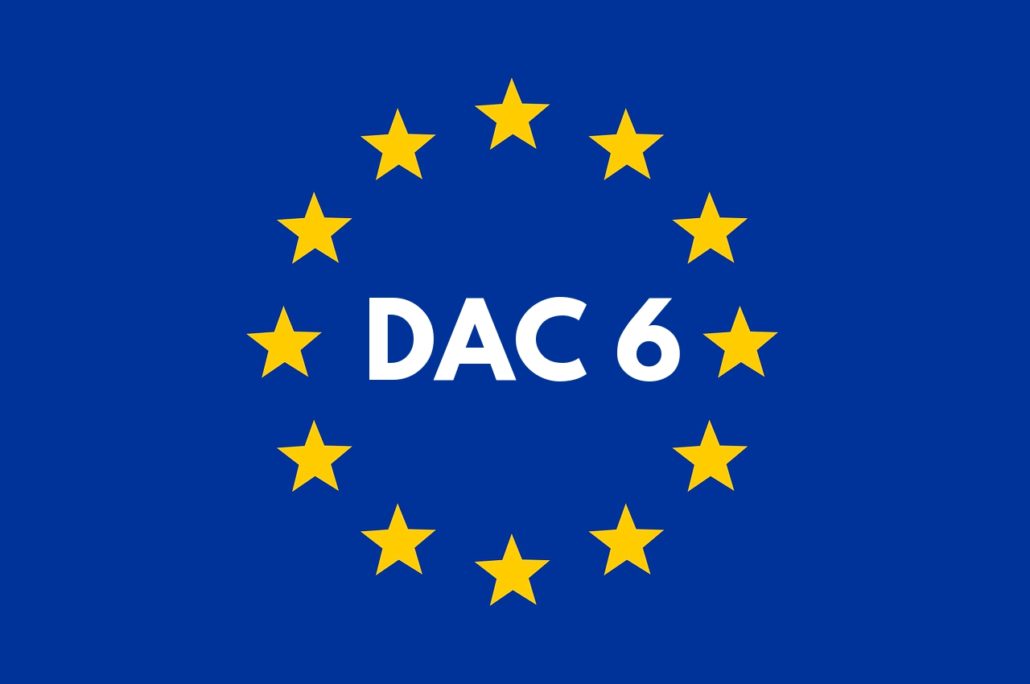Member States find it increasingly difficult to protect their national tax bases from erosion as tax-planning structures have evolved to be particularly sophisticated. Such structures commonly consist of arrangements which are developed across various jurisdictions and move taxable profits towards more beneficial tax regimes or have the effect of reducing the taxpayer’s overall tax bill. As a result, Member States often experience considerable reductions in their tax revenues, which hinder them from applying growth-friendly tax policies. It is therefore critical that Member States’ tax authorities obtain comprehensive and relevant information about potentially aggressive tax arrangements. Such information would enable those authorities to react promptly against harmful tax practices and to close loopholes by enacting legislation or by undertaking adequate risk assessments and carrying out tax audits. However, the fact that tax authorities do not react to a reported arrangement should not imply acceptance of the validity or tax treatment of that arrangement.
For this reason, the Council of the European Union has adopted the Directive 2018/822 for amending the Directive 2011/16/EU as regards mandatory automatic exchange of information in the field of taxation.
DAC6 is designed to give EU tax authorities early warning of new cross-border tax schemes. It requires tax authorities to be notified of cross-border tax arrangements satisfying certain ‘hallmarks’. The tax authorities will then automatically exchange the information with other relevant EU tax authorities.
DAC6 has been transposed into Cyprus law through the amendment of the Law on Administrative Cooperation in the Field of Taxation of 2012 (the “Law“), enacted on 31 March 2021.
DAC6 aims to enhance transparency in the field of taxation and fight against aggressive tax planning.
The obligation to report to the Tax Department rests with the Intermediaries and under specific circumstances with the Relevant Taxpayers.
The Intermediaries are defined as any person that designs, markets, organizes or makes available for implementation or manages the implementation of a reportable cross-border arrangement and any person that, having regard to the relevant facts, circumstances and expertise, knows or could be reasonably expected to know that they have undertaken to provide, directly or by means of other persons, aid, assistance or advice with respect to designing, marketing, organizing, making available for implementation or managing the implementation of a reportable cross-border arrangement.
For a person to be considered as an Intermediary, at least one of the below conditions must apply:
- a) Be resident for tax purposes in an EU Member State (“Member State”);
- b) Have a permanent establishment in a Member State through which the services with respect to the arrangement are provided;
- c) Be incorporated in, or governed by the laws of, a Member State;
- d) Be registered with a professional association related to legal, taxation or consultancy services in a Member State.
The Relevant Taxpayer is defined as any person to whom a reportable cross-border arrangement is made available for implementation, or who is ready to implement a reportable cross-border arrangement or has implemented the first step of such an arrangement. It is important to note, that the obligation to report rests with the Relevant Taxpayer when the Intermediary is waived from the reporting obligation, or when there is no Intermediary.
The Intermediaries or the Relevant Taxpayers are obliged to report information on “reportable cross-border transactions”.
“Cross-border arrangements” are defined as the arrangements that concern either more than one Member State or a Member State and a third country, when at least one of the following conditions are met:
- a) Not all of the participants in the arrangement are resident for tax purposes in the same jurisdiction;
- b) One or more of the participants in the arrangement is simultaneously resident for tax purposes in more than one jurisdiction;
- c) one or more of the participants in the arrangement carries on a business in another jurisdiction through a permanent establishment situated in that jurisdiction and the arrangement forms part or the whole of the business of that permanent establishment;
- d) One or more of the participants in the arrangement carries on an activity in another jurisdiction without being resident for tax purposes or creating a permanent establishment situated in that jurisdiction;
- e) Such arrangement has a possible impact on the automatic exchange of information or the identification of beneficial ownership.
“Reportable cross-border transactions” are defined as any cross-border arrangement that contains at least one of the “hallmarks” included in Appendix IV of the Law. Under some circumstances, the “main benefit test” should also apply for a cross-border transaction to be reportable. The main benefit test is satisfied if it can be established that the main benefit or one of the main benefits which, having regard to all relevant facts and circumstances, a person may reasonably expect to derive from an arrangement is the obtaining of a tax advantage.
The hallmarks are divided into the below five categories:
- i) Generic hallmarks linked to the main benefit test: focuses on general characteristics that can be found in tax avoidance schemes and planning, such as confidentiality clauses in relation to tax arrangements, remuneration linked to tax savings. The main benefit test should also apply.
- ii) Specific hallmarks linked to the main benefit test: focuses on characteristics that are an indication that the tax benefit is the objective of the transaction, such as obtaining a loss making company, income to capital conversion. The main benefit test should also apply.
iii) Specific hallmarks related to cross-border transactions: focuses on cross-border transfers and payments. The main benefit test should apply in certain circumstances.
- iv) Specific hallmarks concerning automatic exchange of information and beneficial ownership: focuses on arrangements that undermine the transparency requirements.
- v) Specific hallmarks concerning transfer pricing: focuses on intragroup transfers and arrangements that contain uncertain pricing.
The information to be provided to the Tax Authority shall contain the following, as applicable:
- a) the identification of Intermediaries and Relevant Taxpayers, including their name, date and place of birth (in the case of an individual), residence for tax purposes, TIN and, where appropriate, the persons that are associated enterprises to the Relevant Taxpayer;
- b) Details of the hallmarks that make the cross-border arrangement reportable;
- c) a summary of the content of the reportable cross-border arrangement, including a reference to the name by which it is commonly known, if any, and a description in abstract terms of the relevant business activities or arrangements, without leading to the disclosure of a commercial, industrial or professional secret or of a commercial process, or of information the disclosure of which would be contrary to public policy;
- d) The date on which the first step in implementing the reportable cross-border arrangement has been made or will be made;
- e) Details of the national provisions that form the basis of the reportable cross-border arrangement;
- f) The value of the reportable cross-border arrangement;
- g) the identification of the Member State of the Relevant Taxpayer(s) and any other Member States which are likely to be concerned by the reportable cross-border arrangement;
- h) The identification of any other person in a Member State likely to be affected by the reportable cross-border arrangement, indicating to which Member States such person is linked.
For transactions executed from 25/6/2018 until 31/12/2021 the deadline to report is 31/1/2022.
From 1 January 2022, reports will need to be filed within 30 days of the earlier of the day on which the arrangement is made available or ready for implementation and the day on which the first step in implementation is made
The Intermediaries that, having regard to the relevant facts, circumstances and expertise, know or could be reasonably expected to know that they have undertaken to provide, directly or by means of other persons, aid, assistance or advice with respect to designing, marketing, organizing, making available for implementation or managing the implementation of a reportable cross-border arrangement, shall also be required to file information within 30 days beginning on the day after they provided, directly or by means of other persons, aid, assistance or advice.
The Cypriot Minister of Finance, on 29 October 2021, issued a Decree (Decree N. 438/2021 or the “Decree”) providing guidance on the Cyprus mandatory reporting requirements for cross-border arrangements (the “DAC6 Guidelines”). The DAC6 Guidelines provide guidance to intermediaries and relevant taxpayers, on the interpretation and the implementation of the DAC6 legislation in Cyprus.
On 10 November 2021, the Cyprus Tax Department issued the interpretative Circular 55 (“Circular”) providing clarifications in relation to the imposition of DAC6 penalties.
The Circular amongst others provides for the following:
- A yearly penalty cap of EUR 120,000 will apply to reportable cross-border arrangements that have a reporting deadline within a calendar year. This yearly cap does not apply if the penalty arose due to a deliberate breach or fraud by the intermediary / relevant taxpayer.
- A 50% reduction in penalty imposed on a reportable cross-border arrangement will apply in cases where ‘corrective actions’ have been taken by the intermediary / relevant taxpayer before the income tax return deadline of the year in which reporting arose. The 50% reduction does not reduce the yearly penalty cap of EUR 120,000.
- Every intermediary or relevant taxpayer must keep books and any other records that may relate to a reportable cross-border arrangement for a period of at least six (6) years from the end of the tax year to which the cross-border arrangement refers.
SOURCE: https://www.mof.gov.cy/mof/tax/taxdep.nsf/dac6_en/dac6_en?opendocument
https://home.kpmg/cy/en/home/insights/2021/11/dac6-developments-in-cyprus-tax-alert.html






